Historical images
| What happened this month | Image | Title | Description | Posted |
|---|---|---|---|---|
| ...This month 89 years ago | 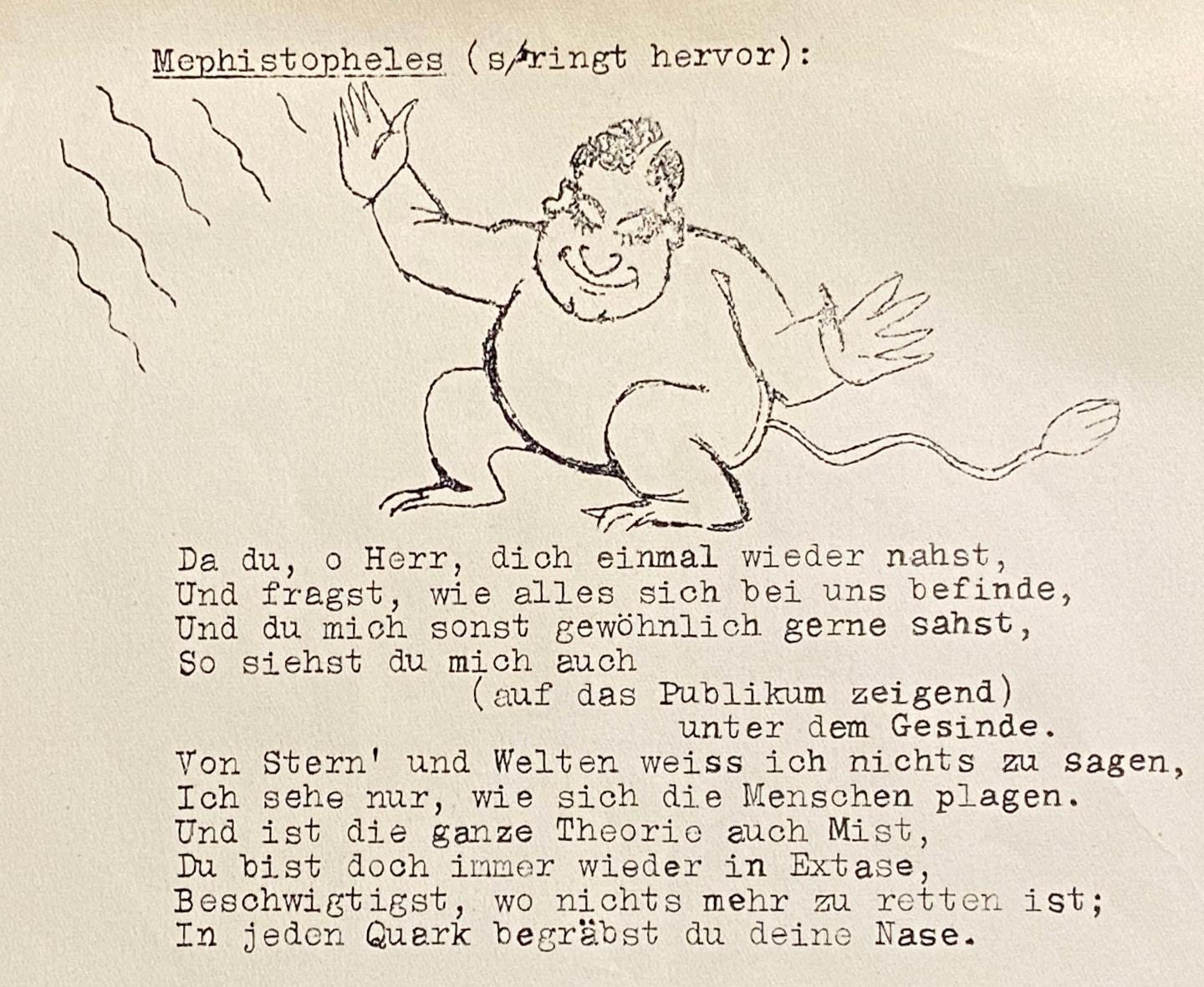
|
April 1932 - A 1930s Quark? | A document in CERN’s Wolfgang Pauli Archive seems to show physicists talking of ‘quarks’ over three decades before Murray Gell-Mann coined the name in 1964 from a line in James Joyce’s novel Finnegan's Wake: "Three quarks for Muster Mark!". Confusing at first sight, but the explanation is simple. The script of a skit parodying Goethe’s Faust includes the lines "In jeden Quark begräst du deine Nase." The skit was performed at the Niels Bohr Institute conference in April 1932; Léon Rosenfeld played Wolfgang Pauli (Mephistopheles) trying to sell the idea of the neutrino (Gretchen) to a sceptical Paul Ehrenfest (Faust). Despite the other physics-related references, this line comes directly from Goethe, when Mephistopheles contemptuously likens humankind to an insolent grasshopper, wanting to leap heavenwards but inevitably sticking its nose into mundane earthly trivia. Quark, a Slavic borrowing in German, was a colloquial term for rubbish or petty nonsense. Although allegedly jealous of his German rival, Joyce read Goethe extensively and is thought to have adopted the word from him. |
|
| ...This month 60 years ago | 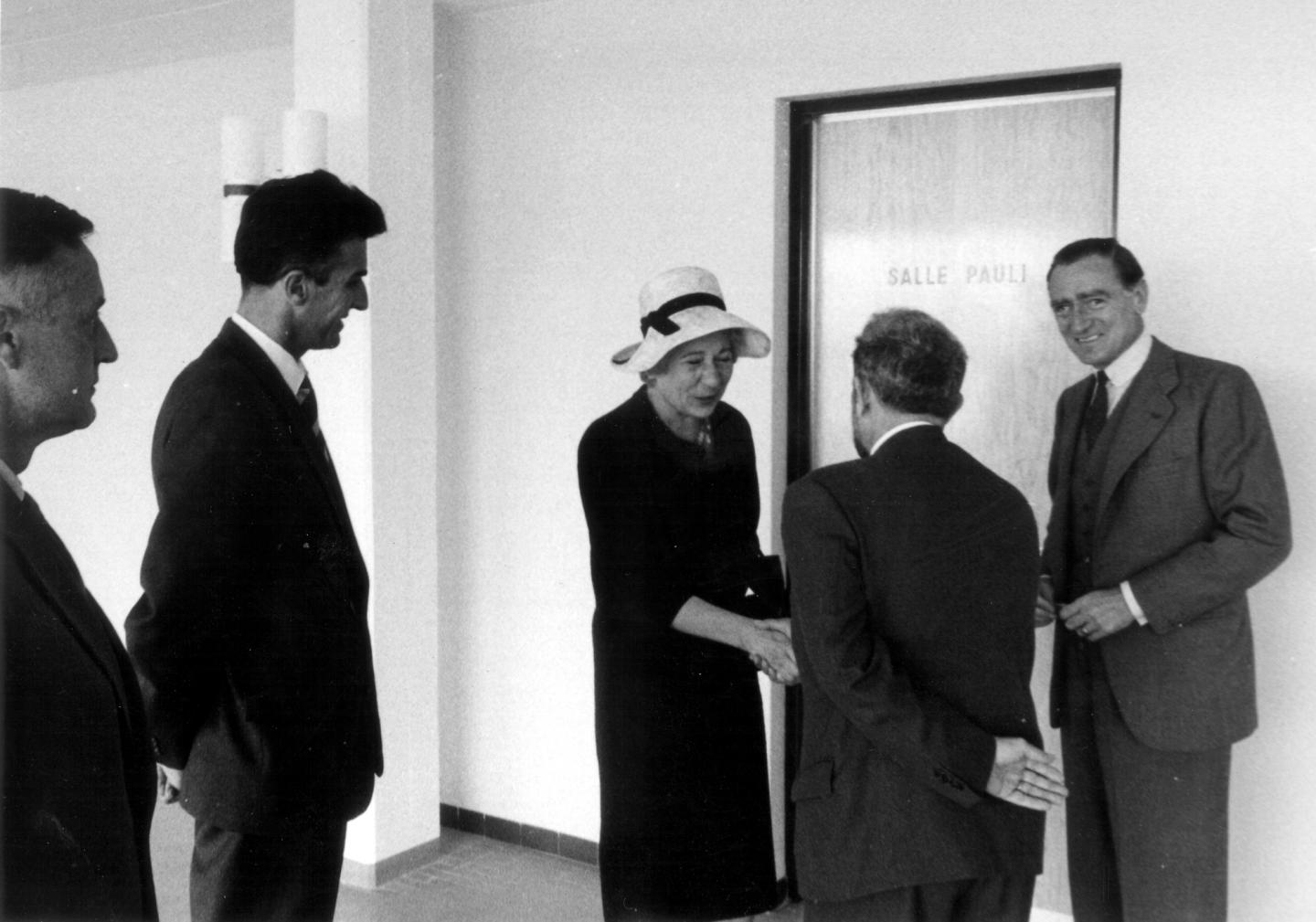
|
June 1960 - CERN commemorates Wolfgang Pauli | In 1960 CERN received a valuable gift: the scientific archives of Wolfgang Pauli. Following Pauli’s death in 1958, his widow Franca Pauli took charge of his scientific legacy. Helped by his former assistants Charles Enz and Victor Weisskopf, she sorted papers and tracked down originals or copies of his many letters. This rich correspondence, covering groundbreaking ideas in physics and revealing Pauli’s broader philosophical interests, was bequeathed to CERN along with other documents, photos and a few objects, such as his pocket watch and baptismal cup. Mrs Pauli is shown here with two of the organization’s founding fathers, Francis Perrin and François de Rose, at the inauguration of CERN’s Pauli Memorial Room (Salle Pauli) on 14 June 1960 (see press release). Most of the items in the Pauli Archive are available online here. |
|
| ...This month 68 years ago | 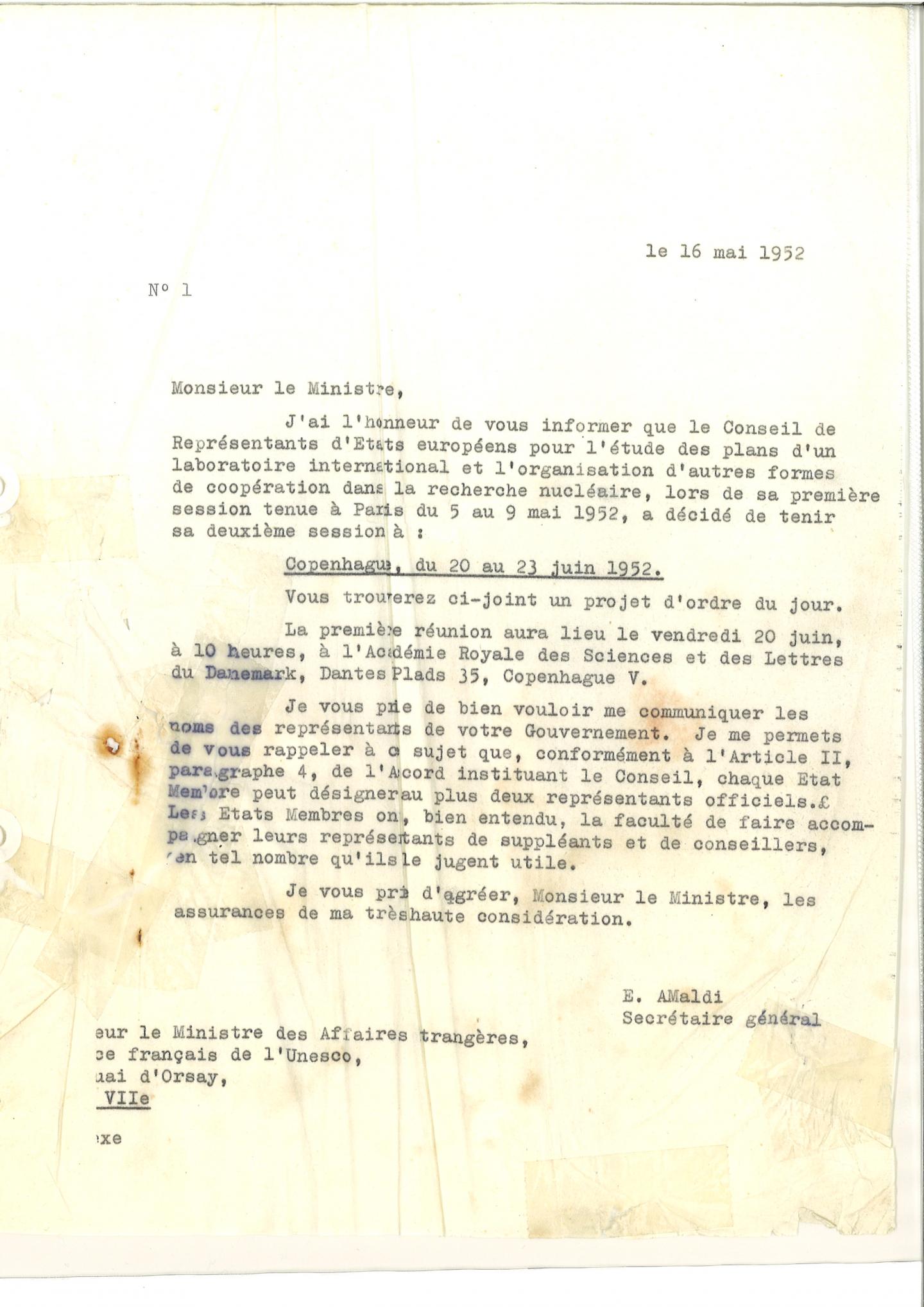
|
May 1952 – What’s the first letter? | Have you ever wondered what the very first letter in the very first binder of the very long series of correspondence files produced by CERN’s Directors-General is about? If so, click here. Don’t get too excited, though. As expected for an organization just coming into existence, it deals with administrative matters, specifically the arrangements for the second meeting of the provisional Council in June 1952. You can read the minutes of that meeting here and browse other Council meetings here. CERN did not officially exist in 1952; the provisional Council’s task of creating the new international laboratory for nuclear physics reached a successful conclusion on 1 July 1953 with the signature of the CERN Convention. |
|
| ...This month 65 years ago | 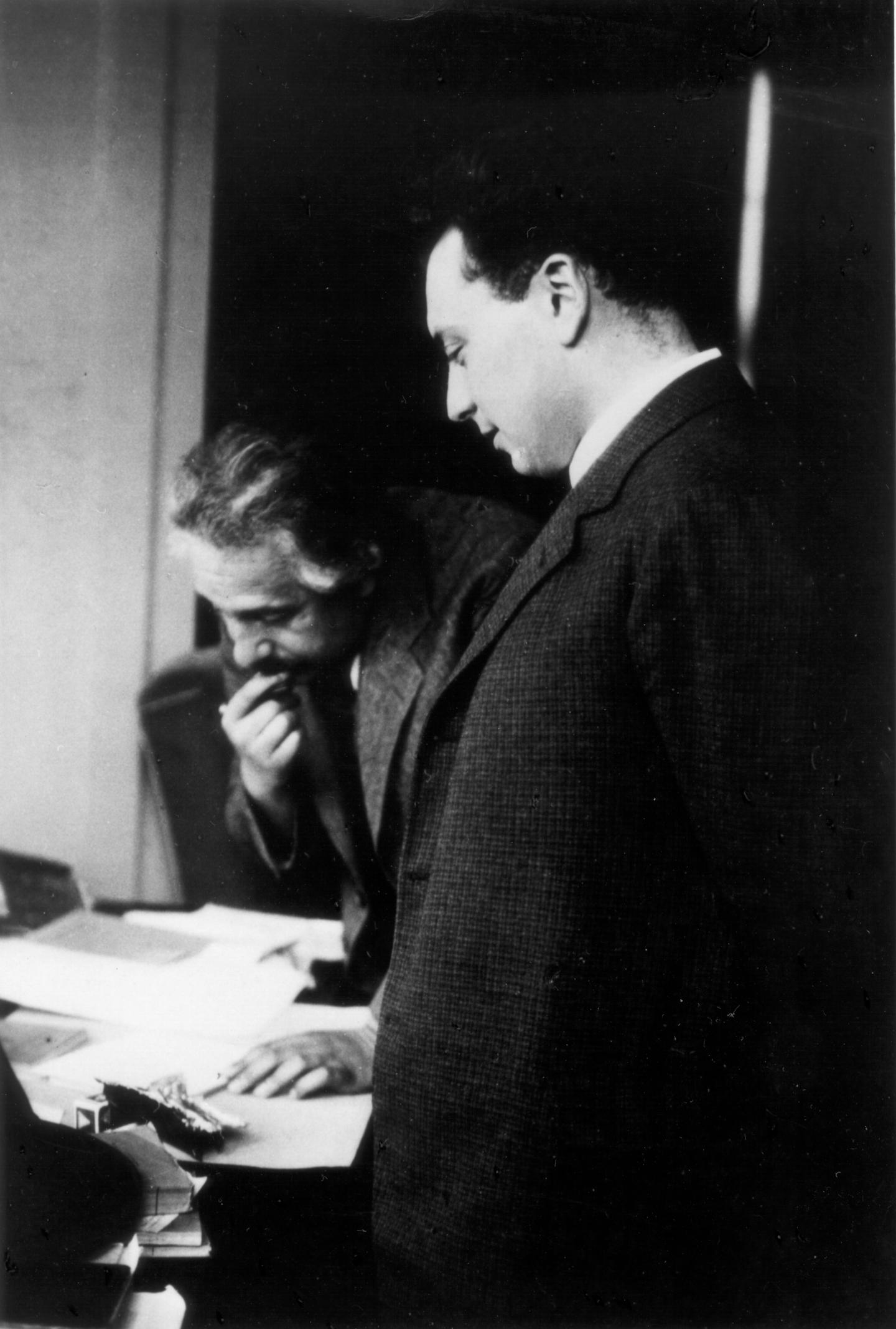
|
April 1955 – Pauli remembers his ‘spiritual father’ | On 24 April 1955, shortly after the death of Albert Einstein, Wolfgang Pauli wrote to Max Born recalling a touching moment he had never forgotten. Pauli was working at the Institute for Advanced Study in Princeton, having left Europe for the USA during World War 2, and had just heard he had been awarded the Nobel Prize. A celebration was organised and, after speeches by various distinguished guests, the elderly and ailing Einstein rose unexpectedly to give an impromptu address. Pauli told Born ten years later, “I will never forget the speech about me, and for me, that he gave at Princeton in 1945 after I got the Nobel Prize. It was like the abdication of a king, installing me as a kind of elected son, as his successor.” Unfortunately, since it was entirely spontaneous, no record of it remained. This photo Pauli and Einstein together in 1926. The 1955 letter (in German) is available here |
|
| ...This month 60 years ago | 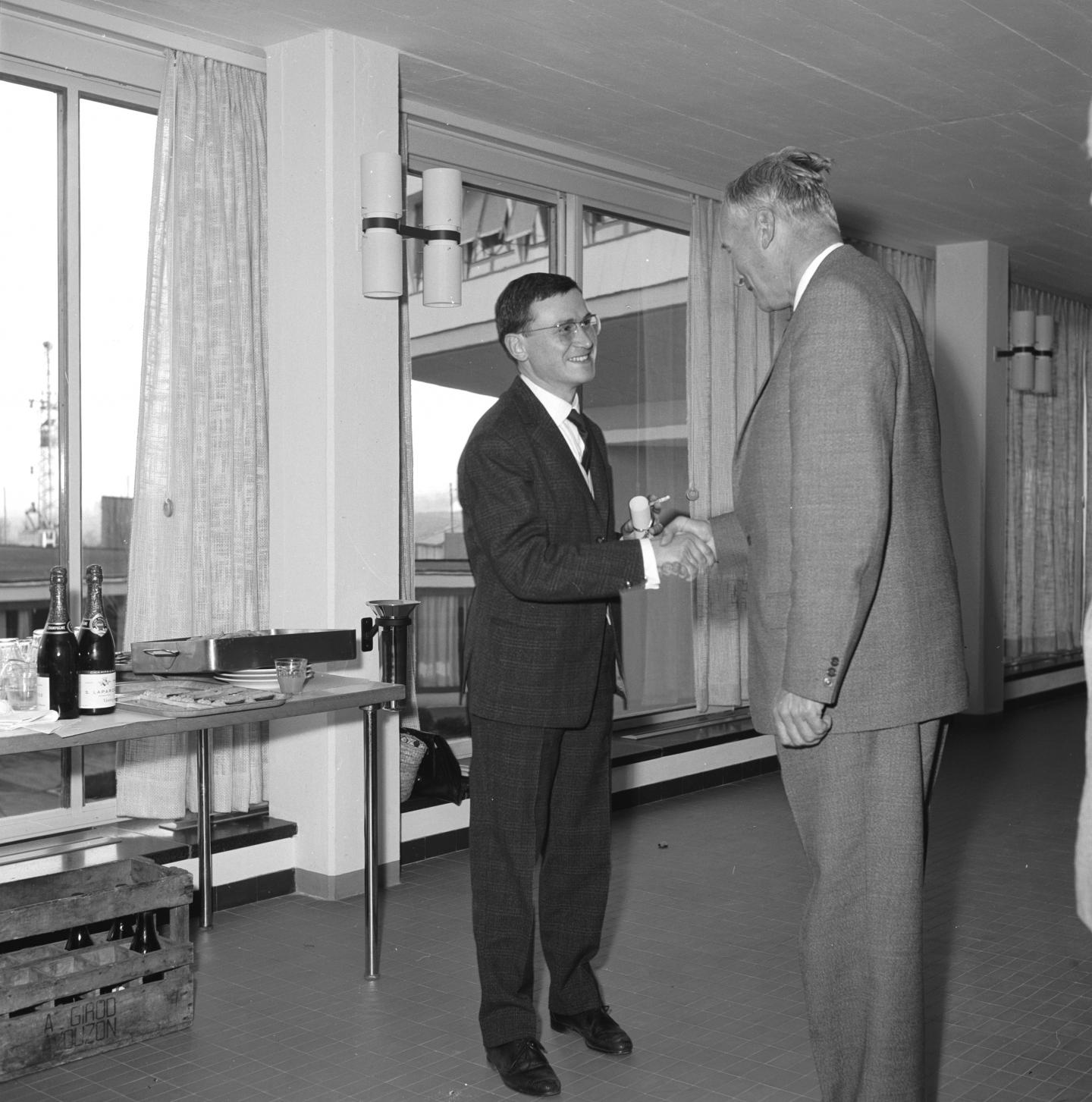
|
March 1960 – CERN welcomes its 1000th staff member | On Tuesday 22 March 1960 the growing CERN family gained a new recruit when Claude Célarier became its thousandth staff member. The young Frenchman trained as a technical draughtsman during the war, then worked in the machine-tool industry and aviation engine manufacture. In his spare time he enjoyed music, the theatre and painting. Thinking CERN might not be a bad place to continue his career, he applied, and was selected to join Mr. Horisberger's drawing office, where he set to work developing beam extraction apparatus. On 23 March Célarier was welcomed to CERN with a small party, and three dozen staff members applauded as he received a commemorative scroll and two bottles of champagne from Director-General Cornelis Bakker. |
|
| ...This month 64 years ago | 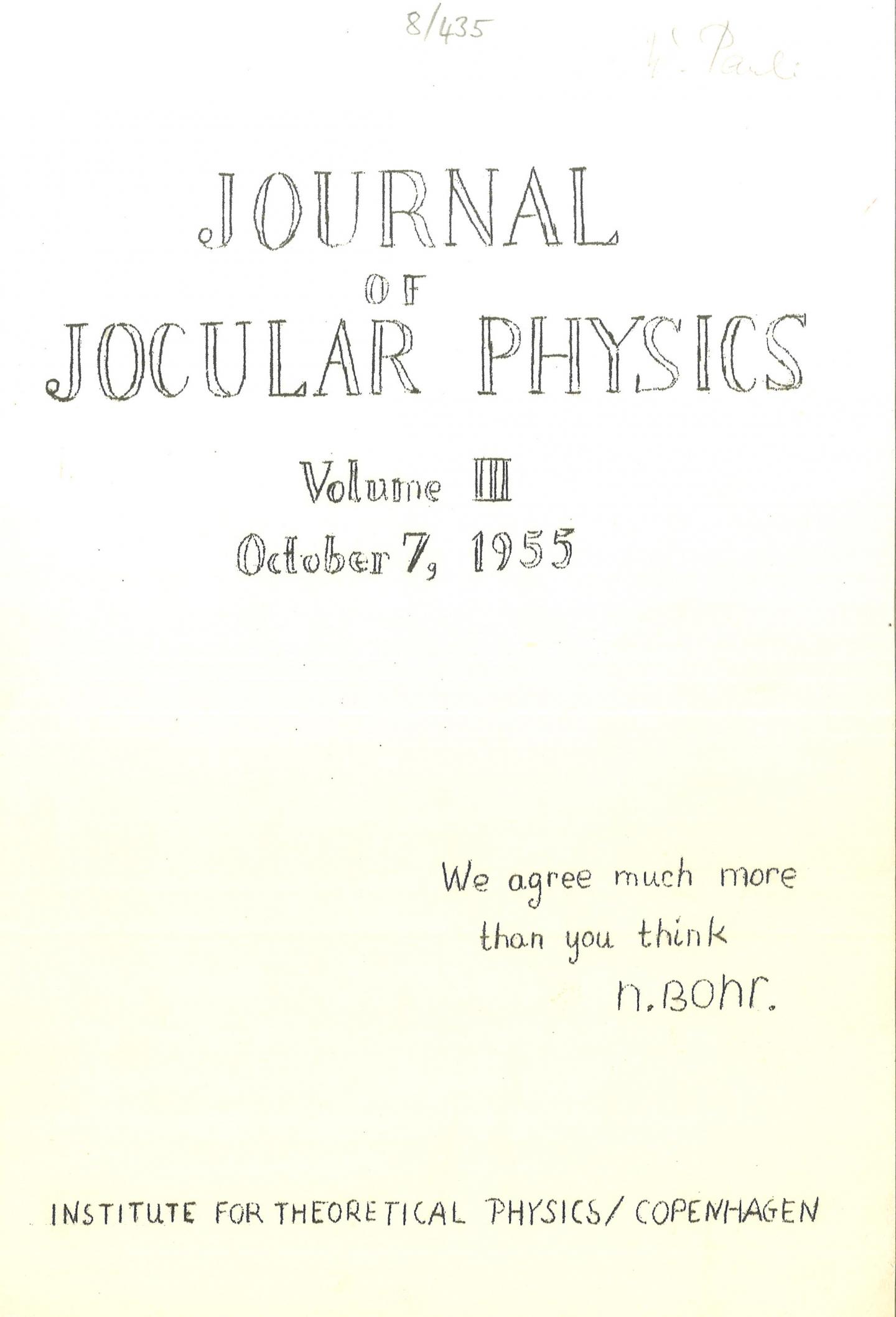
|
October 1955 – The Journal of Jocular Physics | The Journal of Jocular Physics, published by the Institute of Theoretical Physics (now the Niels Bohr Institute), was a spoof journal produced in honour of Niels Bohr or his 50th 60th and 70th birthdays. The 1955 edition included a new version of Kipling’s Elephant’s Child, the Geneva Conference “Alcohol for Peace,” The Atom that Bohr Built, and much more. On page 10, a memo addressed to all members of CERN gave advice on the standardization of papers. Rules and a template were provided to reduce the work of writing and editing articles; helpful suggestions included starting all papers about field theory with the phrase “According to Schwinger.” (The 1935 edition is available here.) |
|
| This month 35 years ago… | 
|
September 1984 – CERN’s 30th anniversary | This photo shows one of the 4,500 visitors at CERN’s Open Day on 15 September 1984. The festivities, which marked the Organization’s 30th anniversary, also included a concert and a formal ceremony on 21 September. CERN’s team of historians put together an exhibition of archival documents, and a history seminar traced over three decades of achievement. Read all about the events in the November 1984 CERN Courier, or browse through the exhibition catalogue and official speeches here. |
|
| This month 32 years ago… | 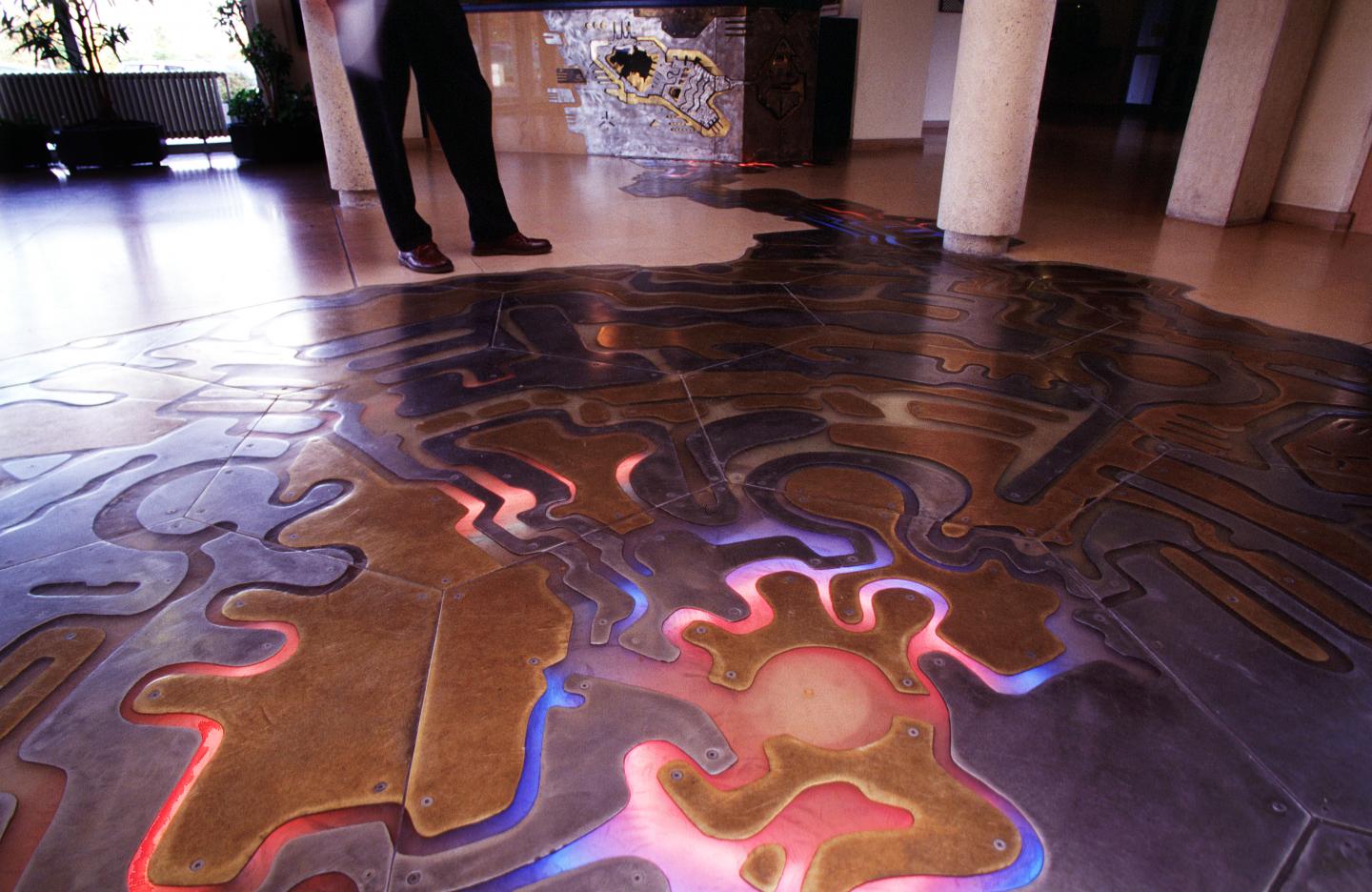
|
August 1987 – “Cosmic Song” by Serge Moro | In 1985 CERN commissioned a monumental mosaic for its new reception building, Serge Moro’s “Cosmic Song”, which was completed in 1987. This photo shows the scale of the artwork, and a more dramatic picture of the swirling colours and shapes was captured by the July/August CERN Courier (p. 31). The metal and plexiglass flooring, built in collaboration with the CERN workshops, uses fluorescent light effects governed by the constant rain of cosmic ray particles from outer space. You can see it in action in the artist’s film clip. |
|
| This month 59 years ago… | 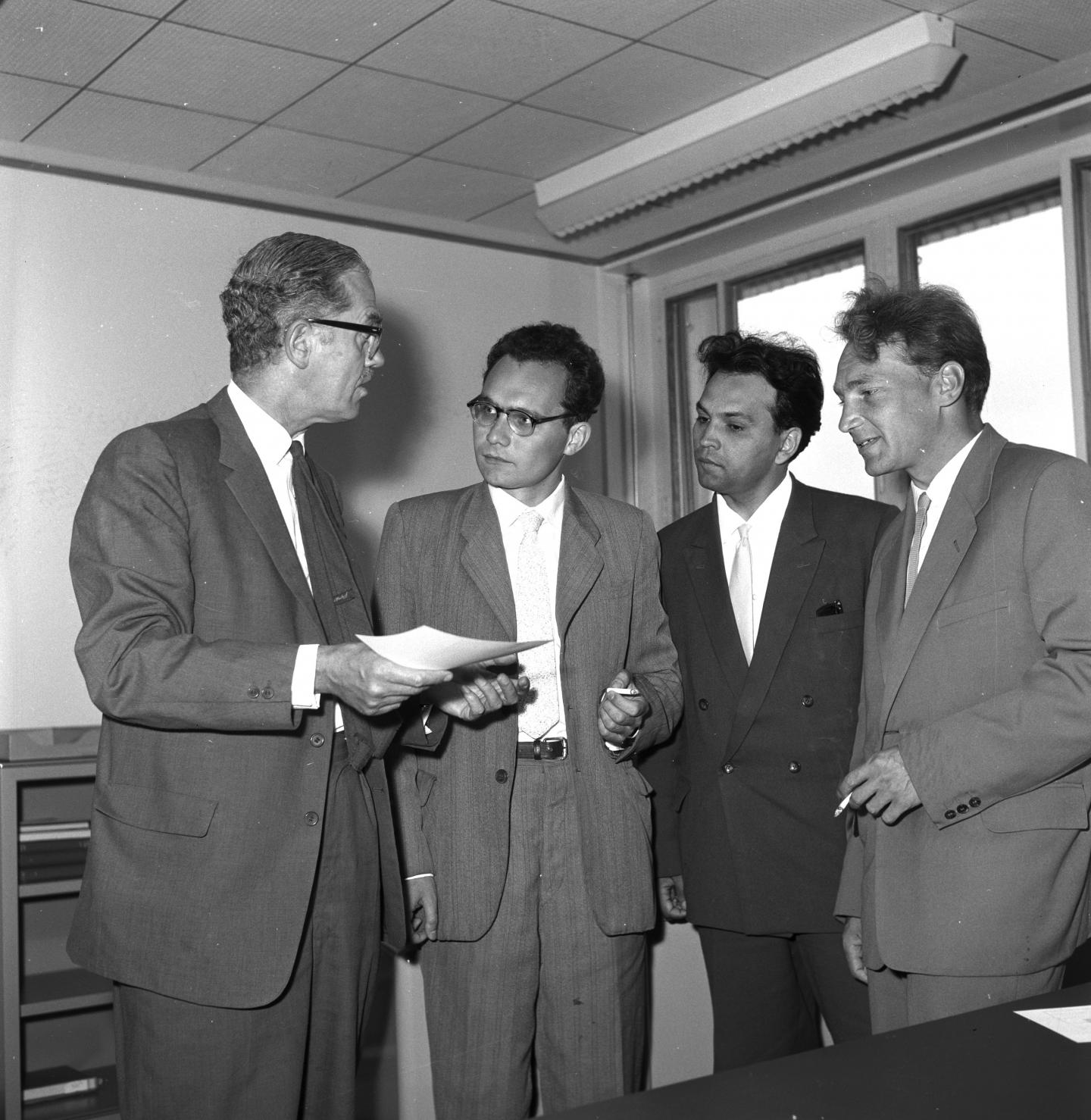
|
July 1960 – Soviet visitors arrive at CERN | Following CERN’s decision in 1959 to welcome Soviet scientists, the first long-term visitors from beyond the iron curtain arrived on 18 July 1960 for a stay of six months. Vladimir Meshcheryakov and Rostislav Ryndin, from the Theoretical Physics Laboratory in Dubna, joined CERN’s Theoretical Studies Division, where they continued to work on projects begun in the USSR, while experimentalist Yuri Sherbakov, also from Dubna, assisted in running the 600 MeV synchro-cyclotron. See the July 1960 CERN Courier for more details. |
|
| This month 48 years ago… | 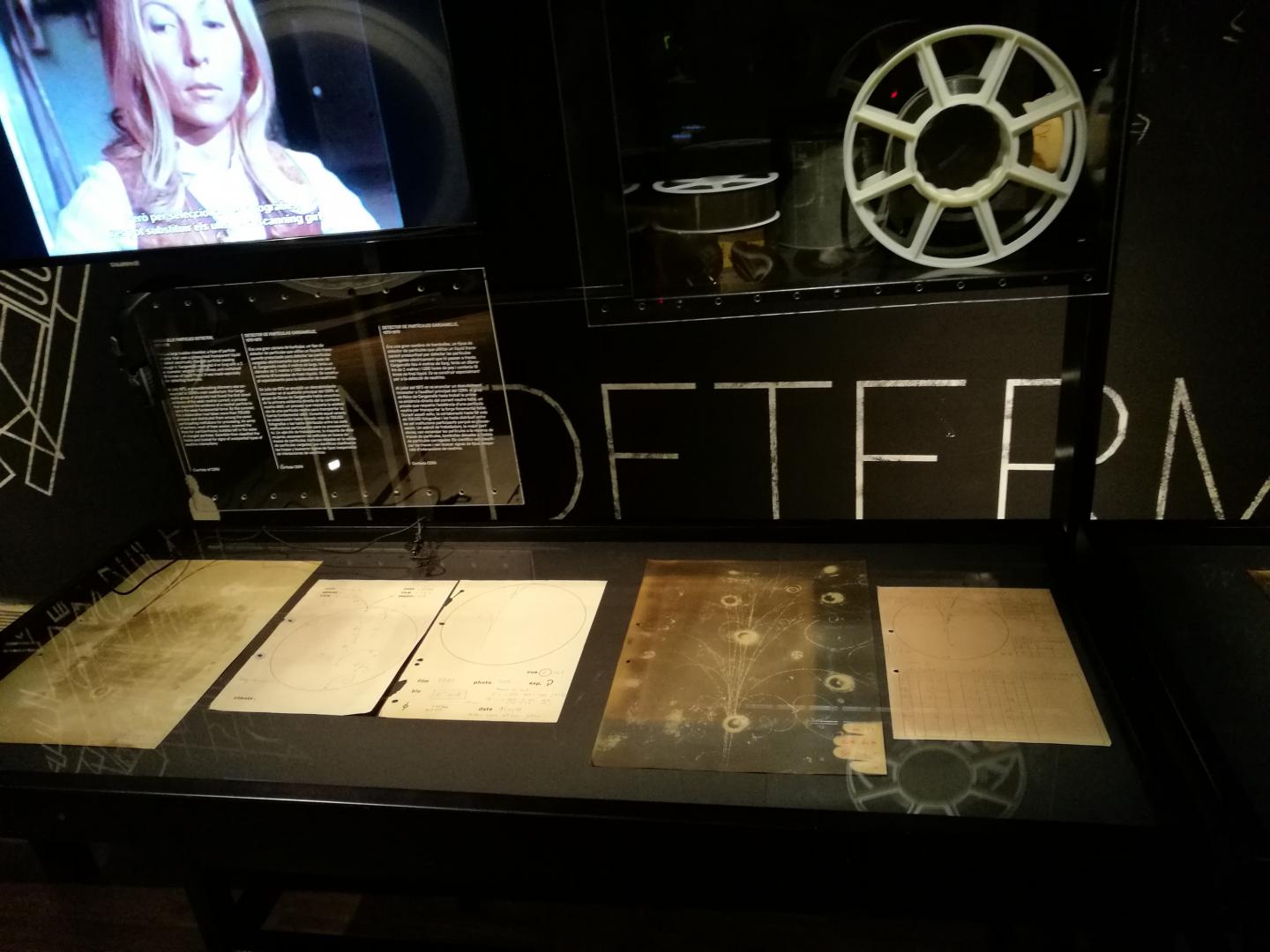
|
May 1971 – Inauguration of Gargamelle | CERN’s Gargamelle bubble chamber was inaugurated on 7 May 1971. The giantess (named after the mother of Gargantua, in François Rabelais’ The Life of Gargantua and of Pantagruel) was 4.8 metres long by 2 metres in diameter, and weighed 1,000 tonnes. Almost half a century later, some of the pictures showing the trails of bubbles that allowed scientists to view the tracks of the particles form part of an exhibition showcasing work by CERN’s artists-in-residence. Read more about the Quantum exhibition at the Centre de Cultura Contemporània de Barcelona (CCCB) here and more about Arts-at-CERN here You can watch a short film about the design, construction and operation of Gargamelle here and see more Gargamelle bubble chamber pictures, with some of their interpretive sketches, here. |
